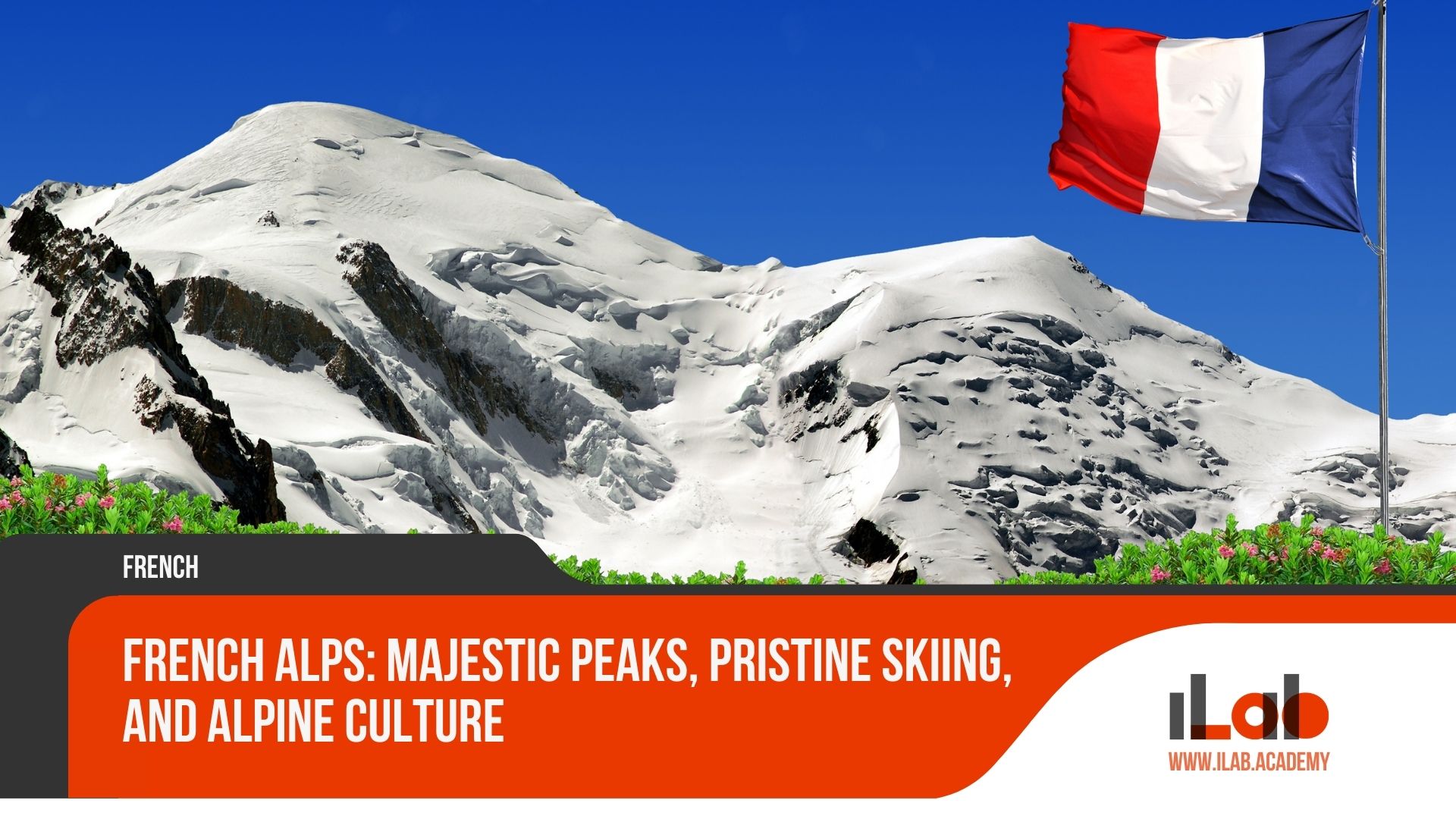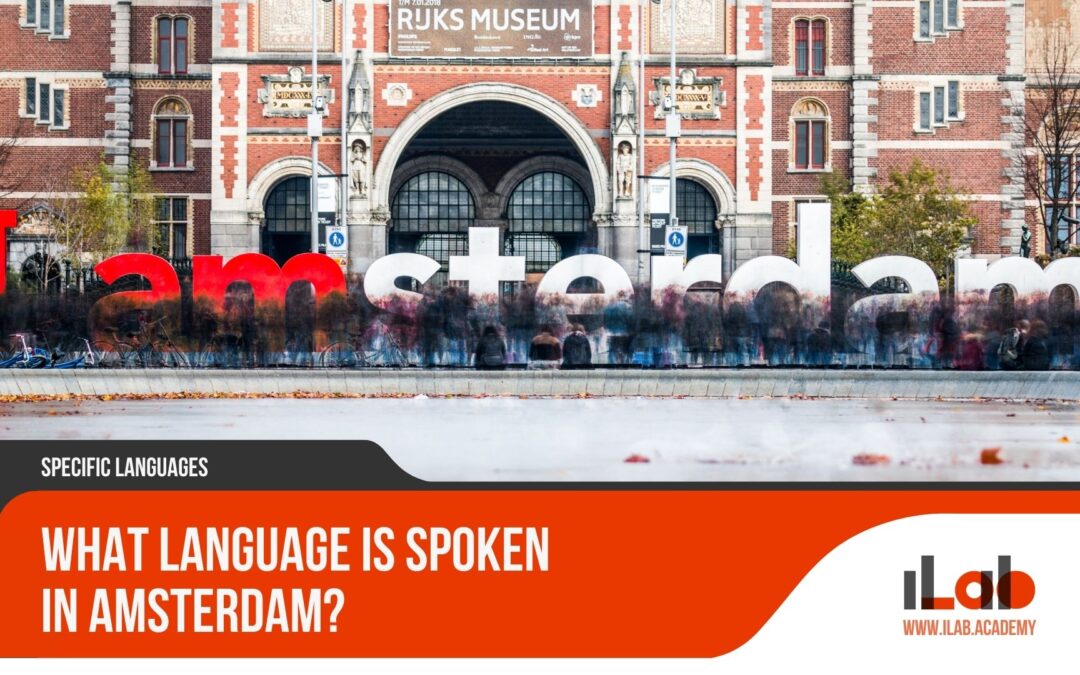Table of contents
The French Alps, a majestic mountain range that dominates the landscape of southeastern France, stand as a symbol of natural splendour and alpine tradition. These mountains are home to some of the most revered ski resorts in the world, where the snow-capped peaks set the stage for a skier’s paradise with impeccably groomed pistes and challenging off-piste adventures. However, the narrative of the French Alps is not solely written on the slopes of its renowned ski destinations; it is also etched into the fabric of the small alpine villages, their enduring customs, and the culinary expertise that is as much a part of the region’s identity as the towering summits themselves. In exploring the rich tapestry of the French Alps, one uncovers a multifaceted gem, where the allure of the outdoors meets a deep-seated cultural vibrancy. As we examine the interplay between the pristine natural environment and the cultural heartbeat of the alpine communities, we invite you to consider the myriad dimensions that make the French Alps an extraordinary tableau, one that beckons for a closer look at its many layers.
Key Takeaways
- The French Alps offer stunning natural beauty and are a significant part of the European Alps, with peaks like Mont Blanc.
- The region is home to world-class ski resorts like Chamonix, Courchevel, and Val d’Isère, attracting winter sports enthusiasts from around the world.
- Beyond skiing, the French Alps offer a range of activities year-round, including hiking, mountain biking, and paragliding.
- The Alpine cuisine and cultural heritage of the French Alps are unique and worth exploring, with hearty food traditions and charming mountain villages.
Geographical Grandeur of the French Alps
Nestled within the larger European Alps, the French Alps boast a myriad of towering peaks, including the renowned Mont Blanc, the highest mountain in Western Europe. This magnificent mountain range stretches across eight countries, yet the French segment claims some of the most dramatic landscapes and notable elevations, including Mont Blanc’s summit at 4,808 meters (15,774 feet). The French Alps form a natural barrier between France and its neighbours, Italy and Switzerland, and include several important regions such as Savoie and Haute-Savoie.
The geology of the French Alps is a testament to the earth’s dynamic forces, featuring ancient rock formations, sprawling glaciers, and deep valleys carved by ice and water over millennia. These geographical features are not only visually striking but also form the basis for the area’s rich biodiversity and complex ecosystems. The Alps are home to distinctive flora and fauna, some of which are endemic to the region, highlighting the need for ongoing conservation efforts.
The topographical diversity of the French Alps allows for a range of climatic conditions, which, coupled with the altitude, create microenvironments where weather can change rapidly. This has significant implications for both the natural world and human activities, such as agriculture, tourism, and alpine sports.
Understanding the geographical grandeur of the French Alps is crucial for appreciating their allure and the profound way they have shaped the culture and livelihoods of the people who live within their shadows. The mountains are a source of inspiration, challenge, and sustenance, and continue to draw visitors worldwide, eager to experience their majestic beauty firsthand.
Exploring the Best Ski Resorts in the French Alps
Having explored the sweeping terrains of the French Alps, we now turn our focus to the region’s premier ski resorts, where Chamonix, Courchevel, and Val d’Isère stand out as epitomes of winter sports excellence. These destinations are renowned for their world-class facilities, breathtaking alpine scenery, and expansive ski areas that cater to enthusiasts of all skill levels.
Chamonix, nestled at the foot of Mont Blanc, offers a legendary skiing experience. It is revered for its challenging slopes, including the famed Vallée Blanche, a 20-kilometre glacial route that provides one of the most thrilling off-piste adventures in the world. With its vibrant town atmosphere and the variety of ski terrains, Chamonix attracts both extreme sports aficionados and those seeking a more leisurely winter holiday.
Moving to the opulent Courchevel, part of Les Trois Vallées, the largest linked ski area globally, one finds a combination of luxury and exceptional skiing conditions. Courchevel is divided into distinct villages, each with its own character, from the family-friendly Courchevel Village to the exclusive Courchevel 1850, where upscale lodging and gourmet dining options abound. The resort’s meticulously groomed pistes and state-of-the-art lift systems make it a paradise for skiers and snowboarders alike.
Val d’Isère, in conjunction with Tignes, forms the Espace Killy ski area, named after the Olympic champion Jean-Claude Killy. Known for its extensive and diverse runs, it also boasts an impressive snow record, ensuring a long season often extending from November to May. Val d’Isère seamlessly blends traditional alpine architecture with modern amenities, creating an enchanting setting for winter escapades.
Each resort, with its unique features and commitment to providing unparalleled skiing experiences, upholds the French Alps’ reputation as a premier destination for winter sports enthusiasts.
Beyond Skiing: Year-Round Attractions in the French Alps
While the French Alps are often hailed as a premier ski destination, they offer an abundance of year-round activities that cater to outdoor enthusiasts of all stripes. Beyond the pristine slopes and après-ski culture, the region transforms with the seasons, providing a playground for a variety of adventures against a backdrop of breathtaking natural beauty. Here is a closer look at three of the most popular non-winter activities:
- Hiking: As the snow melts, the Alps reveal a network of trails that weave through verdant valleys, alpine meadows, and rocky ridges. Hiking in the French Alps can range from leisurely walks that offer panoramic views of the dramatic landscape to challenging treks like the iconic Tour du Mont Blanc, which circumnavigates the highest peak in Western Europe.
- Mountain Biking: The same slopes that entice skiers in winter become a haven for mountain bikers in warmer months. With a vast array of trails catering to all skill levels, from downhill thrills to cross-country journeys, the French Alps are a magnet for two-wheeled enthusiasts seeking adrenaline-pumping descents or scenic rides amidst the alpine scenery.
- Paragliding: For those who wish to see the Alps from an entirely different perspective, paragliding offers an exhilarating way to soar above the peaks. The French Alps are renowned for their excellent thermals and lift conditions, providing ideal circumstances for both novice flyers and experienced pilots to take to the skies.
These activities, among others, illustrate the diverse allure of the French Alps, inviting visitors to explore and appreciate the region’s natural grandeur throughout the year. Whether seeking serenity or adventure, the French Alps present a multitude of options beyond the ski season, ensuring that the splendour of this alpine paradise can be experienced in all its seasonal variations.
Alpine Cuisine: Savoring the Flavors of the French Alps
After exploring the array of outdoor activities available in the French Alps, one’s appetite will undoubtedly be piqued by the region’s equally diverse and hearty culinary offerings. The Alpine cuisine is as integral to the cultural landscape as the majestic peaks themselves, offering a rich gastronomic tradition that is both comforting and indulgent.
Central to this culinary heritage are dishes like tartiflette, raclette, and fondue – each a testament to the region’s love for cheese. Tartiflette is a sumptuous combination of potatoes, reblochon cheese, lardons, and onions, baked to golden perfection, providing a warming and satisfying meal after a day on the slopes. Raclette, meanwhile, involves melting a wheel of cheese and scraping it onto a plate of potatoes, charcuterie, and pickles, encouraging communal dining and exemplifying the region’s convivial spirit.
Fondue, the emblematic Alpine dish, is a communal pot of melted cheese, into which diners dip bread using long-stemmed forks. It’s not just a meal but an interactive culinary experience that brings people together, embodying the social aspect of Alpine dining culture.
These dishes are fashioned from locally sourced ingredients, reflecting the region’s agricultural heritage and the adaptability of its people to the harsh mountain environment. The robust flavours and hearty nature of Alpine cuisine are designed to provide sustenance and warmth in the cold climate, making it inextricably linked to the Alpine way of life.
Savouring the flavours of the French Alps is to partake in a culinary tradition that celebrates the simplicity of high-quality ingredients, the joy of shared meals, and the profound connection between the land and its bounty. It is an essential part of the Alpine experience, as enriching to the soul as the mountain air is to the body.
Cultural Heritage: The Heart and Soul of the French Alps
The cultural tapestry of the French Alps is woven with historical mountain villages, traditional alpine architecture, and vibrant festivals that echo the enduring spirit of this region. These elements combine to form a rich cultural heritage that is as intrinsic to the Alps as the snow-covered peaks themselves.
To paint a picture for the audience, consider the following cultural hallmarks:
- Historical Mountain Villages: The French Alps are dotted with quaint villages that have stood the test of time. Places like Annecy, with its medieval old town and canals, or the stone cottages of Yvoire, offer a glimpse into the past. Each village is a custodian of history, with stories etched into their cobblestone streets and ancient buildings.
- Traditional Alpine Architecture: Wood and stone are the fundamental elements of Alpine building design, with chalets featuring steeply pitched roofs and wide eaves to combat heavy snowfall. This architecture is not only practical but also aesthetically in harmony with the natural surroundings, reflecting a deep-rooted connection between the inhabitants and the landscape.
- Vibrant Festivals: The cultural vibrancy of the French Alps is perhaps best expressed through its festivals. Events such as the Fête de la Musique in Chamonix and the Carnival of Annecy bring music, dance, and colourful costumes to the streets, celebrating ancient customs and the joyous Alpine way of life.
The cultural heritage of the French Alps is a tapestry rich in history and tradition. It invites visitors not just to witness but to participate in a way of life that has evolved over centuries, yet remains deeply connected to its roots. Understanding this culture is essential for those who wish to fully experience the soul of the French Alps.
Eco-Tourism and Conservation Efforts in the French Alps
As tourism flourishes in the French Alps, concerted efforts in eco-tourism and conservation have become essential to preserving the region’s natural beauty and ecological balance. Recognizing the potential environmental impacts of widespread tourism, local authorities, businesses, and conservation groups have initiated a range of sustainable practices aimed at minimizing ecological footprints and promoting environmental stewardship among visitors and residents alike.
Efforts to maintain the pristine conditions of the French Alps include the implementation of waste management programs designed to reduce litter and pollution, particularly in high-traffic tourist areas and along popular hiking trails. Conscious of the vulnerability of alpine flora and fauna, there are also ongoing habitat restoration projects and educational campaigns to raise awareness about the importance of biodiversity and the need to protect endangered species.
Furthermore, many ski resorts have adopted green initiatives, such as using renewable energy sources, enhancing energy efficiency, and implementing responsible water usage practices. These measures help mitigate the environmental impacts associated with alpine sports and resort operations. The promotion of public transportation and the development of eco-friendly infrastructure, such as electric shuttle services and cycling paths, serve to decrease carbon emissions and encourage low-impact travel within the region.
Visitors are encouraged to participate in eco-tourism by choosing accommodations and tour operators that have a proven commitment to sustainability. By making informed choices, tourists can significantly contribute to conservation efforts, ensuring that the majestic landscapes of the French Alps can be enjoyed for generations to come while preserving the area’s unique alpine culture and heritage.
Planning Your Alpine Getaway: Travel Tips and Considerations
Understanding the importance of sustainable travel within the French Alps, it’s equally vital to plan your visit thoughtfully to maximize your experience in this extraordinary region. Visitors should consider several key aspects to ensure a memorable and smoothly orchestrated visit.
When planning your Alpine getaway, keep the following tips in mind:
- Best Times to Visit: The French Alps offer unique charms throughout the year. Winter months, from December to April, are perfect for skiing, while summer, from June to September, offers excellent conditions for hiking, mountain biking, and paragliding. Shoulder seasons can be quieter, providing a more intimate experience with nature.
- Travel Logistics: Access to the French Alps has never been easier, with international airports like Geneva and Lyon in proximity, and efficient train services from major French cities. Once in the Alps, consider eco-friendly transportation options such as electric buses or car-sharing to minimize your environmental footprint.
- Accommodation Options: From luxurious chalets to cosy bed and breakfasts, there’s a wide range of accommodations to suit different budgets and preferences. Advance booking is crucial, especially during peak seasons, to secure the best spots. Look for establishments with eco-certifications to support sustainable tourism.
Use language appropriate for an audience that desires to understand:
It’s essential to match your travel plans with your desired activities; this ensures you experience the Alps’ majesty when it aligns with your interests. Efficient travel arrangements, from flight bookings to local transport, will streamline your journey. By choosing responsible accommodations, you not only enjoy your stay but also contribute to the conservation of this pristine environment. With thoughtful planning, your visit to the French Alps can be as enriching as it is exhilarating.
The French Alps in Film and Literature
Immersed in their cinematic splendour, the French Alps have long served as a dramatic setting for both film and literature, captivating creatives with their rugged beauty and atmospheric charm. The region’s snow-capped peaks, verdant valleys, and quaint villages provide a natural stage for storytelling that is as powerful as it is picturesque. This has resulted in the Alps being featured in a variety of creative works, where they often play a role that is as integral as any character.
In film, the French Alps have provided the backdrop for thrilling action sequences, sweeping romantic epics, and introspective dramas. They have become synonymous with scenes of exhilarating ski chases and breathtaking vistas that cement their place in cinematic history. Filmmakers have long taken advantage of the region’s diverse landscapes to convey mood and atmosphere, harnessing the elements to enhance the narrative tension or to underscore the emotional state of characters.
Literature, too, has found inspiration in the high altitudes of the French Alps. Novelists and poets alike have used the imposing mountains to frame their narratives, drawing on the solitude and majesty of the alpine environment to delve into themes of adventure, introspection, and the sublime. The mountains’ presence in literature often mirrors their physical dominance in the natural world, shaping the lives and stories of those who dwell within their shadows.
The cultural impact of the French Alps extends beyond their borders, as the stories they inspire resonate with audiences and readers worldwide. The region’s power to stir the imagination is a testament to its enduring allure, ensuring that the French Alps will continue to be a source of fascination for creatives and consumers of culture for generations to come.
Frequently Asked Questions
How Do the French Alps Compare to Other Famous Mountain Ranges Around the World in Terms of Biodiversity and Endemic Species?
The French Alps boast a rich biodiversity, with a range of endemic species comparable to other renowned mountainous regions worldwide. The diverse habitats, from alpine meadows to glacial systems, support unique flora and fauna, including the ibex and edelweiss. Protection efforts are vital to preserve this biodiversity, reflecting global environmental concerns similar to those faced by other famous ranges, emphasizing the need for continued conservation initiatives.
What Are Some Lesser-Known Historical Events That Have Taken Place in the French Alps and Influenced Its Culture and Communities?
While less discussed, the French Alps have been the stage for numerous historical events shaping its culture and communities. For instance, during World War II, the region was pivotal for resistance fighters, and earlier, Hannibal’s reputed crossing with elephants in 218 BC highlights its strategic importance. These events, among others, have woven a rich tapestry of history that continues to influence the Alpine identity and societal norms.
How Have Climate Change and Global Warming Affected Snowfall and Ski Seasons in the French Alps in Recent Years?
Climate change has significantly impacted the French Alps, resulting in inconsistent snowfall and shorter ski seasons. Recent years have seen rising temperatures contribute to less predictable and diminished snow cover, affecting winter sports and the local economy reliant on tourism. This variability poses challenges to resort operations and necessitates adaptive strategies to ensure sustainability and the continued enjoyment of alpine activities for future generations.
What Initiatives Are in Place to Support the Local Economy in the French Alps Beyond Tourism, and How Do They Preserve Traditional Alpine Livelihoods?
In the French Alps, initiatives such as promoting local agriculture, artisanal crafts, and renewable energy projects support the economy beyond tourism. These efforts not only provide alternative income streams but also help preserve traditional livelihoods. By fostering sustainable practices, these programs ensure the community retains its character while adapting to modern economic challenges, thereby safeguarding the region’s heritage and ensuring its resilience against the over-reliance on seasonal tourism.
Are There Any Unique Educational or Scientific Research Facilities Located in the French Alps, and What Studies Are They Known For?
The French Alps host several unique educational and scientific research facilities. These institutions are renowned for studies in alpine ecology, geology, and glaciology, reflecting the region’s diverse natural environment. Among them, the Observatory of Haute-Provence stands out for astronomical research, while the Merieux Foundation contributes to medical and biological sciences. Such facilities play a pivotal role in advancing our understanding of mountain ecosystems and the broader impacts of climate change.
What are some popular ski areas in the French Alps?
Some popular ski areas in the French Alps include Courchevel, Chamonix, Mont Blanc, Val Thorens, and Portes du Soleil. Other popular ski areas in the French Alps include Megeve, La Plagne, Les Deux Alpes, Alpe d’Huez, and Tignes. These areas offer a variety of slopes for skiers and snowboarders of all levels, as well as stunning alpine scenery and a range of apres-ski activities.
What are the major towns in the French Alps?
Some major towns in the French Alps include Grenoble, Megève, Aix-les-Bains, Chambéry, and Albertville. Other major towns in the French Alps include Annecy, Chamonix, and Briançon.
What are some popular tourist attractions in the French Alps?
Popular tourist attractions in the French Alps include the Mont Blanc Massif, Chamonix Valley, Tour du Mont Blanc, and the Jura Mountains. Other popular attractions include the Aiguille du Midi, Lake Annecy, Les Trois Vallees ski area, Ecrins National Park, and the Vanoise National Park. Additionally, there are many charming alpine villages and towns to explore, such as Annecy, Grenoble, and Megève. Outdoor activities such as skiing, snowboarding, hiking, and paragliding are also major draws for visitors to the French Alps.
What are some activities to enjoy in the French Alps during the summer?
You can enjoy activities like hiking, mountain biking, paragliding, and exploring the alpine culture during the summer in the French Alps. Other activities to enjoy in the French Alps during the summer include:
1. Rock climbing: The French Alps offer a variety of rock climbing opportunities for climbers of all levels.
2. Canyoning: Explore the stunning gorges and rivers of the French Alps by participating in a canyoning excursion.
3. White-water rafting: Experience the thrill of navigating the rapids of the rivers in the French Alps.
4. Via ferrata: Test your nerve and climbing skills on a via ferrata route, which involves climbing fixed routes with the aid of cables, ladders, and bridges.
5. Horseback riding: Explore the picturesque landscapes of the French Alps on horseback.
6. Golfing: Enjoy a round of golf on one of the many golf courses located in the Alps.
7. Wellness and spa experiences: Relax and rejuvenate at one of the luxury spas in the French Alps.
8. Visiting alpine villages: Explore charming alpine villages, visit local markets, and sample traditional cuisine.
9. Wildlife watching: Observe the diverse wildlife of the Alps, including ibex, chamois, and marmots.
10. Scenic drives: Take a leisurely drive through the stunning mountain passes and enjoy breathtaking views of the Alps.
Which is the highest peak in the French Alps?
The highest peak in the French Alps is Mont Blanc, standing at an elevation of 4,810 meters. It is also the highest peak in the entire European Union.
What are some famous spa towns in the French Alps?
Some famous spa towns in the French Alps include Aix-les-Bains, Évian-les-Bains, and Saint-Gervais-les-Bains, known for their thermal baths and wellness facilities. Other famous spa towns in the French Alps include:
1. Chamonix- Mont-Blanc: Known for its luxurious spas and wellness centers, as well as its stunning views of the Mont-Blanc mountain.
2. Brides-les-Bains: Famous for its thermal baths and spa treatments, this town is also a popular destination for skiers and hikers.
3. Thonon-les-Bains: Located on the shores of Lake Geneva, this spa town offers a variety of wellness facilities and thermal baths.
4. Uriage-les-Bains: Known for its thermal springs, this spa town has been a popular wellness destination since the 19th century.
5. Challes-les-Eaux: This historic spa town offers a range of wellness treatments and activities, as well as beautiful surroundings for relaxation and rejuvenation.
These spa towns in the French Alps offer a perfect combination of natural beauty, relaxation, and wellness facilities, making them popular destinations for travelers seeking to unwind and rejuvenate.
What are the popular winter sports in the French Alps?
Popular winter sports in the French Alps include skiing, snowboarding, snowshoeing, and other snow-related activities. Skiing is by far the most popular winter sport in the French Alps, with numerous ski resorts offering a variety of slopes for all levels of skiers. Snowboarding has also gained popularity in recent years, with many resorts offering snow parks and halfpipes for snowboarders. In addition to skiing and snowboarding, snowshoeing is a popular activity for those who want to explore the beautiful winter landscape of the Alps. Other popular winter sports in the French Alps include ice climbing, cross-country skiing, and sledging. These activities provide visitors with a range of options for enjoying the stunning alpine scenery and fresh mountain air during the winter months.
What are some notable regions in the French Alps?
Notable regions in the French Alps include Aix-les-Bains, Chamonix, the Northern Alps, and the Savoy region, each offering unique experiences and natural beauty. Other notable regions in the French Alps include:
1. Haute-Savoie: Known for its stunning lakeside towns such as Annecy and its proximity to the beautiful Mont Blanc.
2. Isere: Home to the popular ski resorts of Alpe d’Huez and Les Deux Alpes, as well as the vibrant city of Grenoble.
3. Savoie: Renowned for its charming mountain villages and world-class ski resorts like Val d’Isère and Courchevel.
4. Ecrins National Park: A protected area famous for its dramatic mountain landscapes, diverse flora and fauna, and excellent hiking and climbing opportunities.
5. Vanoise National Park: The first national park in France is a paradise for nature lovers, with its alpine meadows, glaciers, and rich wildlife.
6. Oisans: A region known for its challenging mountain trails, picturesque alpine villages, and access to ski resorts like La Grave and Les 2 Alpes.
These regions collectively offer a wide range of outdoor activities, from skiing and snowboarding in the winter to hiking, mountain biking, and paragliding in the summer, making the French Alps a popular destination for nature enthusiasts and adventure seekers.
What geographical features make the French Alps unique?
The French Alps are known for their majestic peaks, pristine lakes, and diverse landscapes, making it a popular destination for nature enthusiasts and adventure seekers. One unique geographical feature of the French Alps is their towering peaks, with the Mont Blanc being the highest summit in Western Europe. The rugged and dramatic mountains provide incredible vistas and opportunities for skiing, snowboarding, and mountaineering. The region also boasts a multitude of glaciers, including the Mer de Glace, which is the largest glacier in France. The presence of glaciers not only adds to the stunning scenery but also contributes to the diverse ecosystem of the area. In addition, the French Alps are home to numerous pristine lakes, such as Lake Annecy and Lake Geneva, which are surrounded by picturesque mountain landscapes. These lakes offer opportunities for water sports, relaxation, and wildlife observation. The diverse landscapes of the French Alps also include lush valleys, alpine meadows, and dense forests, which provide habitats for a wide variety of flora and fauna. The contrasting landscapes and unique biodiversity add to the allure of the region. Overall, the combination of soaring peaks, glaciers, lakes, and diverse landscapes makes the French Alps a truly unique and captivating destination.
How can I explore the French Alps?
You can explore the French Alps by taking part in guided tours, hiking routes, cycling adventures, and by visiting charming alpine towns throughout the region. Here are a few suggestions for exploring the French Alps:
1. Guided Tours: There are many tour companies that offer guided hiking, skiing, and mountaineering tours throughout the French Alps. These tours can range from easy day trips to more challenging multi-day adventures.
2. Hiking: The French Alps are known for their beautiful hiking trails, ranging from gentle walks through flower-filled meadows to challenging ascents of towering peaks. The Tour du Mont Blanc is a popular long-distance hiking trail that circumnavigates the Mont Blanc massif and passes through France, Italy, and Switzerland.
3. Cycling: The French Alps are a mecca for road cyclists and mountain bikers alike. There are numerous cycling routes that offer breathtaking scenery and challenging climbs, such as the famous Col du Galibier and Alpe d’Huez.
4. Skiing and Snowboarding: In the winter months, the French Alps are a paradise for skiers and snowboarders. There are numerous ski resorts to choose from, with options for all levels of ability.
5. Alpine Towns: Throughout the French Alps, there are charming alpine towns and villages to explore, each with its own unique character and local cuisine. Chamonix, Annecy, and Grenoble are just a few of the many towns worth visiting.
No matter how you choose to explore the French Alps, you’re sure to be amazed by the stunning scenery and outdoor adventures on offer.
Conclusion
In summary, the French Alps offer an exceptional fusion of natural splendour, recreational diversity, culinary richness, and cultural depth. This region not only caters to those seeking the thrill of winter sports but also to those who yearn for year-round adventure and cultural immersion. Conservation efforts ensure the preservation of this unique environment, promising future generations access to its alpine wonders. The enduring allure of the French Alps continues to inspire and captivate, making it a timeless destination for travellers worldwide.














